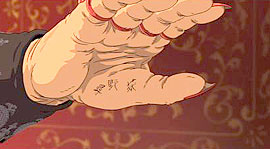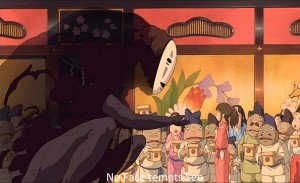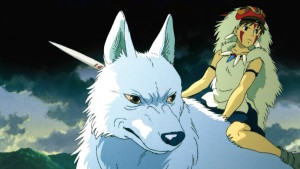In my last blog post, we talked about Spirited Away and the Prostitution Theory. But Spirited Away isn’t the only movie that has a widely debated fan theory. A great example of another is My Neighbor Totoro and the Sayama incident.
What is the Sayama Incident?
On May 1, 1963, Yoshie Nakata (or Nakata Yoshie for people who put the surname last), a girl who had just turned 16 on that day, was kidnapped. Her family received a ransom note asking for 200,000 yen in exchange for Nakata. Her sister, who loved her dearly, went to the arranged meeting place accompanied by the police. She had brought fake money, but before the exchange, the kidnapper felt that something was amiss and escaped. Just 3 days later, on May 4, Nakata was found dead in the alley of a farm. She was determined to have been raped and murdered. Devastated, her sister went insane, often seeing apparitions, and committed suicide.

Ishikawa being arrested.
On May 23, a man named Kazuo Ishikawa (or Ishikawa Kazuo for surname last), was arrested for a completely different crime. However, after being interrogated for 28 days on end, he confessed to the rape and murder of Nakata. Many people believed the perpetrator had been caught, but the courts had overlooked much of the evidence leading to his innocence due to the fact that he was a Burakumin, a group of impoverished people who faced a lot of social discrimination. Ever since he has been released from jail, Ishikawa has been fighting for his innocence.
What was the evidence that led to his conviction? It is said that Ishikawa’s handwriting and the writing on the ransom note were relatively similar. There was also one testimony that Ishikawa had asked about the whereabouts of the house on the night the ransom note was delivered. Nakata’s older sister and a polieman also testified that they heard the voice of the kidnapper and that it matched Ishikawa’s voice. Lastly, Ishikawa gave an alibi that was proven to be false during his trial.

The few characters that Ishikawa had in common with the writer of the ransom note.
However, this evidence may seem insignificant when you take other factors into account. For example, Ishikawa’s handwriting was said to have matched the ransom note because of a few strange characters that he wrote differently than most other people. However, because of his impoverished situation, he never really learned to write and wasn’t fully literate. In fact, he never even finished elementary school. Additionally, a large part of his conviction was based on the fact that the police found a pen that belonged to Nakata in Ishikawa’s house. However, they only found this pen the third time they investigated his house, having missed it the first two times despite the fact that each investigation lasted two hours. The pen was said to have been placed on the top of his door frame. The investigators said that they hadn’t seen the bright pink pen because the frame was too high up, although the frame was said to only be about six feet high. But that’s not even the worst of it. The confession that Ishikawa made did not match the method of Nakata’s murder at all. He said that he strangled her with his right hand, but this would have made clear bruise marks on her neck which weren’t there. Instead, it is shown that she was strangled by a cloth. Adding onto that, he said he strangled her because she began to scream. However, just 20 meters away, a man who was working near the scene of the crime reported to have heard faint sounds from a festival 500 meters away, but didn’t hear any screams at all. Lastly, we can’t ignore the fact that Ishikawa was held for almost a full month before he confessed, which many people believe led to a forced and pressured confession.
I’ll leave you to decide whether or not Ishikawa was wrongly convicted, but for now, let’s talk about My Neighbor Totoro.
What is My Neighbor Totoro all About?

Totoro (left) with Mei (middle) and Satsuki (right).
The movie follows the story of two young sisters, Mei and Satsuki. In the beginning of the movie, they are shown moving into a new house. As the story progresses, Mei goes missing and a sandal her size is found in a nearby river. Police determine that she has drowned, but Satsuki, devastated, refuses to believe this and runs off to find her little sister. After searching for a while, Mei is found with a spirit named Totoro. At the end of the movie, the two sisters visit their mother at a hospital before returning home.
If you’d like more information on the movie, I would strongly encourage that you watch it yourself as I am only covering the main points that I would like to address.
Why is Totoro Considered the God of Death?
There are a couple of different pieces of evidence that point to the theory that Miyazaki created this film to support Ishikawa in his fight for freedom. It is said that Miyazaki likes to address political problems in his films, whether or not this is really true. But that hasn’t stopped fans from searching through his movies to find their own theories on what his movies mean.
One of these pieces of evidence is the two sisters’ names. The older sister is named Satsuki, and the younger one is named Mei. Satsuki, in Japanese, means May, and Mei is pronounced “May”. Both of these names are said to point to the month during which Ishikawa was convicted and the Sayama incident took place.
Mei (left) and Satsuki (right) discovering soot sprites in their new home.
Additionally, as stated above, in the beginning of the movie, Mei and Satsuki are moving into a new house. Scattered throughout the house are soot sprites. In Japanese lore, it is said that one will only see soot sprites when they are about to die. Their grandmother, who was also there moving into the house, couldn’t see the soot sprites at all, despite the fact that they are shown to be scattered everywhere throughout the house.

The purple circle indicates the box that is labeled “Sayama Tea”
Furthermore, when they are moving into the house, it is stated that they are moving into a town called Sayama Hills. This is furthered by the label on a box behind Mei and Satsuki’s grandmother that says “Sayama Tea”.
Soot sprites at the bottom of the forest floor as Satsuki runs to find her sister.
When Mei runs away, it is believed that she actually drowned, but her spirit ran into the forest and found Totoro the God of Death. Later, when Satsuki runs after Mei, she is believed to have entered “the gateway of death” found in the forest to find Totoro. Although the setting may not seem to have much of an effect, it is important to state that the rape and murder of Nakata also happened in a forest. Adding onto this, when Satsuki runs through the forest, she again sees the soot sprites scurrying along the floor of the path.

The Cat Bus with a sign that says “Grave Road”.
Later, Satsuki and Mei are escorted by a cat bus that brings them to their mother. It is said that children in the movie are able to see magical things like this. However, only Mei and Satsuki can see them, despite the fact that other children were around. Additionally, the older sister of Nakata was said to have seen apparitions of strange rabbit-like and cat-like creatures. Lastly, the one of the stops of the Cat Bus is “Grave Road”.
When Satsuki and Mei go to meet their mother, the calendar in the mother’s room is actually set to a date much earlier than the date that she is said to have died on. Although this could be attributed to her just not updating her calendar, fans have said that this actually meant that the Cat Bus took them back in time to say goodbye to their mother before they went to meet her in heaven (or hell).
Lastly, at the end of the movie, Satsuki and Mei completely lose their shadows. This is theorized to be because light doesn’t bounce off of spirits and goes right through them instead. They are shown to be closely and happily interacting with Totoro. However, this is seen through the eyes of their father, who is believed to be imagining that they are happy in heaven.
So what do you think? Although there was no mention of Ishikawa, do you think that Miyazaki made this movie to address the Sayama incident?
Thank you so much for reading these blog posts! I am still not sure whether or not I will continue posting, but I’m still glad I got to share this information with you.

Goodbye for now!





























